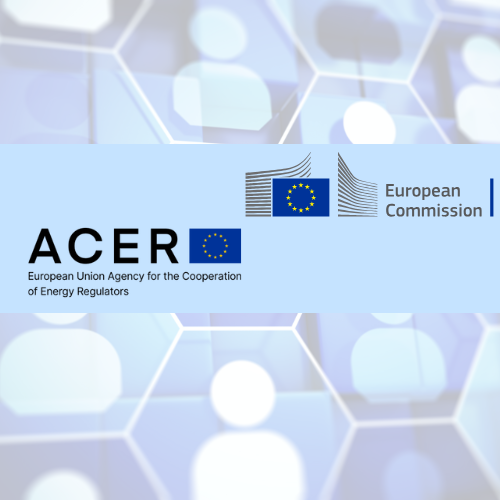ARERA publishes report on Market Integrity in the Italian Day-Ahead Electricity Market (2023–2024): REMIT-Focused Investigation Identifies Potential Economic Withholding across all generation technologies.
The Italian energy regulator ARERA has published the results of a two-year fact-finding investigation (click here for report summary overview [seven pages] and here for the detailed analysis in Annex A [80 pages]) into the functioning of the national day-ahead electricity market - Mercato Giorno Prima (MGP) - for the two-year period 2023–2024. The study was triggered by ARERA’s Resolution 401/2024/R/eel (click here) and was conducted in accordance with REMIT and alignment with ACER’s updated December 2024 guidance on market manipulation (click here).
The purpose of the investigation was to assess whether wholesale electricity markets were functioning competitively and in line with REMIT standards, to identify any conduct that might signal potential market abuse, and to determine whether further regulatory action, enforcement steps, or referrals to the Competition and Markets Authority were warranted.
The report confirms the presence of probable economic capacity withholding particularly involving combined-cycle gas turbines (CCGT) and quantifies its measurable impact on zonal prices. ARERA also flags similar, though less impactful, dynamics among wind and solar generators. While not declaring definitive violations of REMIT, the resolution introduces a regulatory position that interprets certain offer behaviours as indicative of an “apparently artificial” price level pending further operator-level analysis.
ARERA emphasised on page 4 of Annex A that under REMIT Article 2(2)(a)(ii), determining market abuse requires two tests: the power to influence prices, and the absence of a legitimate justification. The resolution explicitly notes that while the findings point to "apparent" artificiality, actual violations depend on case-by-case justifications provided by market participants:
The general and cognitive nature of the investigation, which, as we have seen, required the adoption of simplifying hypotheses, does not, however, allow the above-mentioned conducts to be automatically attributed an abusive connotation under the REMIT profile. In fact, in order to be able to consider the price level as "effectively" artificial, it is necessary, on the one hand, to refine case by case the simplifying, albeit prudential, choices (adopted in the construction of the cost parameter for the "thermal-combined" technology and in the estimation of the expected production for the "wind" and "solar" technologies) and, on the other hand, to ascertain the absence of legitimate justifications underlying the conduct highlighted by the fact-finding investigation, as provided for by the REMIT regulation itself.
The report concludes by noting that further investigative work is required to validate bid pricing strategy justification with each of the market participants analysed during this period. It also outlined a set of recommendations for additional structural changes with Terna, the Italian TSO, including the ability to better capture and label data at a more granular level across each of the generation technologies which would allow for future enhanced analysis and monitoring.
How does ARERA define the day-ahead market?
ARERA defines the day-ahead electricity market as follows:
The electricity auction markets with short-term delivery include: the day-ahead market, the auction sessions of the intraday market, the auction sessions of the balancing energy markets and the redispatch markets. These markets play an important role in the functioning of the national electricity system, since, unlike the markets in continuous trading, they concentrate liquidity at pivotal moments in the scheduling of generation and/or storage units dispatchable by the TSO, taking into account the different times of full activation of the different technologies in different states of operation, and therefore form more representative and reliable balancing prices.
What were ARERA’s report findings? Potential Economic Withholding Behaviour Identified across all generation technologies.
The investigation focused on generation technologies for which ARERA had sufficient cost and performance data to support credible modelling (see below) which included CCGT, wind, and solar units. Technologies with incomplete or insufficiently granular data such as certain modular hydro units or those misclassified within Terna’s Gaudi system were excluded from the quantitative analysis.
[a] ARERA’s Three Phase Modelling Methodology Used To Identify Potential Economic Withholding Behaviour.
ARERA’s analytical framework followed a structured, three-phase methodology designed to identify and quantify potential economic withholding behaviours by generators participating in the day-ahead market. This approach drew on REMIT principles and ACER’s interpretive guidance and emphasized both pricing discipline and conduct-based detection.
Phase 1: Price-to-Cost Benchmarking
The initial step involved developing a core set of indicators to measure the alignment between observed zonal market prices and the estimated short-term marginal costs (SMC) of the Relevant Generation Units (UPRs) likely to have been price-setting in each zone. This analysis covered three primary generation sub-types: CCGT, wind, and solar photovoltaic. For thermal units, marginal cost estimates were constructed using conventional efficiency assumptions and two gas transportation cost scenarios. Where zonal prices exceeded the marginal cost of the marginal unit, a condition referred to as a “positive markup at the margin”, ARERA flagged these deviations as possible signals of economic withholding.
Phase 2: Offer Behaviour Analysis
Building on this initial benchmark, ARERA developed a broader set of indicators aimed at identifying offer behaviours consistent with economic withholding, as defined by ACER. Specifically, the analysis focused on offers that were rejected by the market clearing algorithm because they were priced above or, in some cases, exactly at the zonal clearing price, despite having marginal costs below that level. These rejections were interpreted as a sign that available capacity may have been withheld for strategic purposes.
Phase 3: Counterfactual Simulation (What-If Analysis)
To quantify the potential price impact of the identified withholding behaviours, ARERA conducted a series of “what-if” simulations. These replaced actual offer prices with the estimated marginal costs of the same units, thereby modelling how the market would have cleared had operators behaved as pure price-takers i.e., assuming no ability or intent to influence zonal prices. As ARERA noted in its summary on page six, such withholding behaviour does not always result in visible price markups unless evaluated through simulation:
"Capacity-holding conduct... does not necessarily imply the presence of positive mark-ups at the margin, and their effects can only be captured by simulating price-taker conducts (i.e. by substituting in the day-ahead market model the prices offered by the operators with their marginal costs) and by comparing the simulated zonal prices with the actual zonal prices.”
ARERA was able to estimate the cumulative pricing impact attributable to strategic bidding by comparing simulated zonal prices with actual outcomes to identify potential economic withholding behaviour.
[b] ARERA’s Findings
The report identifies significant and repeated deviations between market-clearing prices and the estimated SMC across all three generation technologies - CCGT, wind, and solar generating units. It highlights potential economic withholding market abuse behaviour particularly among dominant thermal generators.
Economic withholding conditions specific to ARERA’s analysis are defined on page 43 of Annex A as containing the following three considerations:
- An offered price higher than the zonal price;
- A zonal price higher than the marginal cost including opportunity costs; and
- A refused offer quantity.
The report evaluates the performance of Italy’s day-ahead market (MGP) based on the foundational assumption that in a well-functioning, competitive environment, market-clearing prices should reflect the true short-term economic fundamentals, specifically the marginal cost of production at the time of auction.
Given the use of unit-based bidding at the national level, the reference benchmark for evaluating pricing behaviour was the SMC of each generation unit, adjusted for its specific technology type. ARERA’s approach across the three generation types was as follows:
- For thermal generators, SMCs were calculated primarily based on fuel costs, with allowances for additional variable or opportunity costs.
- In the case of dispatchable hydropower and pumped storage units, the relevant benchmark was the opportunity cost of stored water e.g. the economic value of deferring generation to a later period.
- By contrast, intermittent renewables such as wind, solar, and run-of-river hydro were assumed and expected to offer their forecasted output at zero price, in line with their non-dispatchable nature and minimal marginal cost.
Key findings from the report include:
- CCGT withholding behaviours occurred in at least 30% of hours, with zonal price effects in 28% of hours in 2023 and 25% in 2024.
- Price differentials from simulated “price-taker” scenarios averaged €17–22/MWh in 2023 and €15–24/MWh in 2024.
- Wind and solar behaviours showed a greater frequency of potential withholding but a lower average price impact: €5–9/MWh (2023) and €1–2/MWh (2024).
The above results, if read from a REMIT perspective, highlight not only the presence of probable conducts of economic withholding of capacity but also the effect that these conducts may have determined on the market price, bringing it to an "apparently" artificial level. (Annex A, page four)
Did ARERA identify market abuse among any market participants?
While ARERA stops short of declaring explicit market abuse under REMIT, it cautions that the detected patterns suggest conduct that may have produced artificial prices. It even goes as far as insinuating that there was a possibility that the withholding behaviour was possibly collusive in nature across all generation operators. Page 77 of Annex A noted:
Under the assumptions of the investigation, during the hours when there was an impact on market prices resulting from the economic capacity-holding behaviour, the market price level is considered to be artificial. The frequency of the economic capacity-holding behaviour and the number of operators involved suggest the possibility that these conducts were carried out collectively, all the more so considering that MGP is a game that is potentially repeated ad infinitum.
What are implications for generation operators based on the report findings?
The report reminds generation operators that the burden of proof is on them to prove why their bidding behaviour was not deemed capacity holding in nature as per REMIT guidance. ARERA concludes its report with a clear follow up action to verify the behaviour with market participants and ensure that there are justified reasons for the bidding behaviour during the 2023-2024 observability period. It specifically notes as per REMIT that the only legitimate reason for disparity in bidding prices are the existence of opportunity costs.
In addition to verifying the actual (or at least probable) impact of the conduct on the market price, ACER's REMIT Guidance also requires verification of whether there is a legitimate regulatory, technical or economic justification for the same conduct. In particular, it was pointed out that the existence of opportunity costs is the only legitimate economic justification.
The burden of proof, as explicitly set out in Article 2(2)(a)(ii) of REMIT, lies with those who have implemented the capacity withholding action. Therefore, the onus is on the operators to provide evidence of any additional opportunity costs that have not been taken into account in the analyses carried out and/or specific non-economic reasons that have informed their bidding strategies. (Annex A, page 78)
 RegTrail Insights
RegTrail Insights
From a compliance perspective, the ARERA report marks a shift toward probabilistic surveillance e.g. monitoring bid behaviour based on modelling assumptions for pricing logic, inviting market participants to reassess their offer formation practices, internal justifications, and documentation protocols.
For both Compliance and Front Office teams, while ARERA’s approach to modelling price formation using a set of market assumptions and simulating ‘what if’ scenarios may not be a new regulatory tool, it is one of the first reports where a National Regulatory Authority (NRA) explicitly documents its methodology for analysing economic withholding which may be used by other NRA’s in the future to distinguish between legitimate commercial conduct and harmful market distortions.
The report provides ARERA's detailed methodologies and assumptions for defining market pricing behaviour which may act as a playbook which other firms can benchmark against. Specifically, firms now have insights into how the Italian NRA, and potentially other NRAs, models potential market pricing formation and can input this model into their overall bid pricing models to add an additional layer of analysis and documentation for their bidding practices to support Front Office activity.
Compliance can also explore building surveillance alerts that create baseline pricing expectations using the principal assumptions as described by ARERA and flag when bid pricing goes over/under the market assumed price by a certain percentage threshold.
In conclusion, ARERA’s 2023-2024 MGP report establishes a precedent for cost-based price integrity analysis in a large EU power market. It demonstrates how simulation models, marginal cost benchmarking, and offer alignment frameworks can expose potential manipulation or price distortions even in the absence of direct intent.
The report implicitly challenges the sector to evolve its commercial and compliance practices merging operational transparency with market conduct policies. It also potentially strengthens the foundation for an EU-wide adoption of probabilistic REMIT enforcement tools e.g. modelling pricing behaviour and identifying potential market abuse versus analysing actual pricing data for actual market abuse.
We explore the case in further detail and break down specific themes from the report alongside compliance learnings as follows:
- Economic Withholding and REMIT Compliance Risk;
- Renewable Bidding Practices and Compliance Boundaries; and
- REMIT Enforcement and the “Artificial Price” Standard.


